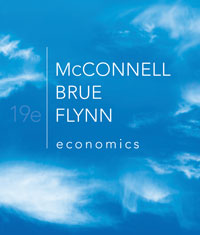1 <a onClick="window.open('/olcweb/cgi/pluginpop.cgi?it=jpg::::/sites/dl/free/0217511447/883766/ch38_q1.jpg','popWin', 'width=NaN,height=NaN,resizable,scrollbars');" href="#"><img valign="absmiddle" height="16" width="16" border="0" src="/olcweb/styles/shared/linkicons/image.gif"> (28.0K)</a> A) deficit of $10 billion B) deficit of $25 billion C) deficit of $35 billion D) surplus of $10 billion 2 A) 10 yuan B) 5 yuan C) 1 yuan D) 20 yuan 3 A) debit in the current account B) foreign currency outflow C) credit in the capital and financial account D) credit in the reserve account 4 <a onClick="window.open('/olcweb/cgi/pluginpop.cgi?it=jpg::::/sites/dl/free/0217511447/883766/ch38_q4.jpg','popWin', 'width=NaN,height=NaN,resizable,scrollbars');" href="#"><img valign="absmiddle" height="16" width="16" border="0" src="/olcweb/styles/shared/linkicons/image.gif"> (13.0K)</a> A) $1 will buy 20 pesos B) $1 will buy 5 pesos C) 95 pesos will buy one dollar D) 5 pesos will buy one dollar 5 <a onClick="window.open('/olcweb/cgi/pluginpop.cgi?it=jpg::::/sites/dl/free/0217511447/883766/ch38_q5.jpg','popWin', 'width=NaN,height=NaN,resizable,scrollbars');" href="#"><img valign="absmiddle" height="16" width="16" border="0" src="/olcweb/styles/shared/linkicons/image.gif"> (13.0K)</a> A) shift the demand curve to the left, causing the dollar to depreciate B) shift the demand curve to the right, causing the dollar to depreciate C) shift the supply curve to the right, causing the dollar to appreciate D) shift the supply curve to the left, causing the peso to appreciate 6 A) the Canadian dollar will appreciate relative to the Mexican peso B) Mexico will be forced to accept policies leading to lower unemployment and higher prices C) gold will flow into Canada D) Mexico will be forced to sell official dollar reserves to maintain price stability 7 A) Net transfers B) Net investment income C) Goods exports D) U.S. purchases of assets abroad 8 A) the franc has appreciated relative to the peso B) Mexicans will buy more Swiss goods and services C) the franc has depreciated relative to the peso D) gold will flow from Mexico to Switzerland 9 A) its imports exceed its exports B) foreign purchases of its assets exceed its purchases of assets abroad C) it has a trade deficit D) it has a capital and financial account deficit 10 A) 25 kroner B) 450 kroner C) 900 kroner D) 1500 kroner





